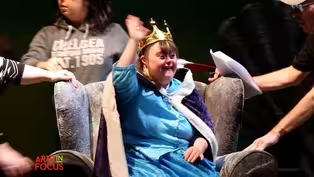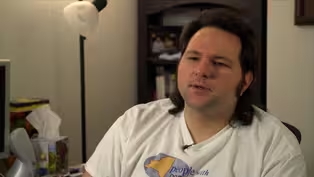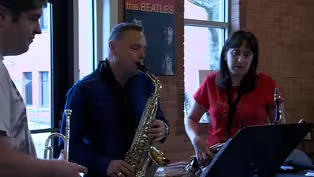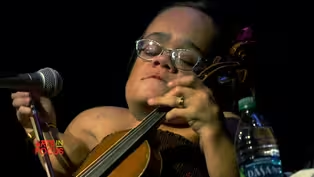Move To Include
Shannon Halligan on visual art therapy
Special | 2m 17sVideo has Closed Captions
Shannon Halligan uses art to help a wide range of people
Working through emotions, traumas and everyday life is hard. Art can help. Shannon Halligan is a creative art therapist in Rochester, NY. who uses art to help a wide range of people.
Problems playing video? | Closed Captioning Feedback
Problems playing video? | Closed Captioning Feedback
Move To Include is a local public television program presented by WXXI
Move To Include
Shannon Halligan on visual art therapy
Special | 2m 17sVideo has Closed Captions
Working through emotions, traumas and everyday life is hard. Art can help. Shannon Halligan is a creative art therapist in Rochester, NY. who uses art to help a wide range of people.
Problems playing video? | Closed Captioning Feedback
How to Watch Move To Include
Move To Include is available to stream on pbs.org and the free PBS App, available on iPhone, Apple TV, Android TV, Android smartphones, Amazon Fire TV, Amazon Fire Tablet, Roku, Samsung Smart TV, and Vizio.
More from This Collection
Arts InFocus is a half-hour weekly program that champions arts and culture in the Rochester, New York area and beyond. This collection is specifically curated by Move to Include and presents in-depth stories and profiles of individuals and organizations who are working to make the arts inclusive and accessible for all.
Video has Closed Captions
Theatre company Artists Unlimited, all about highlighting abilities. (3m 41s)
Video has Closed Captions
Filmmaker, Adrian Esposito, a passionate storyteller portraying people with disabilities. (4m 31s)
Arc of Monroe's Community Arts Connection
Video has Closed Captions
Arc of Monroe's Community Arts Connection, Bringing art to day-habilitation. (6m 6s)
Video has Closed Captions
Gaelynn Lea's music is haunting. It's no wonder she won NPR Music's 2016 Tiny Desk Contest (3m 52s)
Providing Support for PBS.org
Learn Moreabout PBS online sponsorshipI'm Shannon Halligan, and I'm a creative art therapist, and I offer individual art therapy and group art therapy.
Our therapy is focused on the process of creativity.
So the part that's therapeutic is the experience that you're going through while you're making art.
By doing something creative, you are tapping into your strengths.
You're focused on what you're good at.
Art making and art therapy helps you build confidence so, you know, later on, oh, okay, I can handle this problem that I'm facing.
I can deal with my anxiety in the moment in a creative way.
I think what art does is it really gets to the subconscious things that are affecting us that we may not realize.
So a lot of times art therapists will recommend keeping a visual journal in the same way that a traditional therapist might recommend a writing journal.
I love it because it's such a nice way to communicate not only with your self but with others.
Once you're clear about how you're feeling, you can then communicate that to someone that's important in your life or a teacher or a peer.
Most people recognize that art therapy is great for kids, teens, people with disabilities, and I work with those populations, and there's beautiful benefits to that.
I also work with adults.
I'll have people come to me who will say, You know, I've tried talk therapy or psychotherapy, I just want something else.
I want something that I can learn to work on to help me through these challenges.
The great thing about it is it's a way for them to really know themselves really well.
The ways you can express yourself creatively in art therapy is widespread.
You can do painting, you can draw, you can work with clay or sculpture.
You can also do more crafty types of activities.
I have clients who love to sew, make jewelry, work with wood or metal.
Art therapy is a really great way to dive in and learn those skills, but then also learn about yourself a little bit more.
Art allows us to express parts of ourselves that maybe we're not even aware of, and art making over time shows themes in our artwork.
It might be themes about certain situations, it might be themes about important relationships in our lives, but it helps us just build the awareness of their own emotional quotient.
You know, they really can develop a deep knowing of themselves when they try something like art therapy.
Support for PBS provided by:
Move To Include is a local public television program presented by WXXI

















